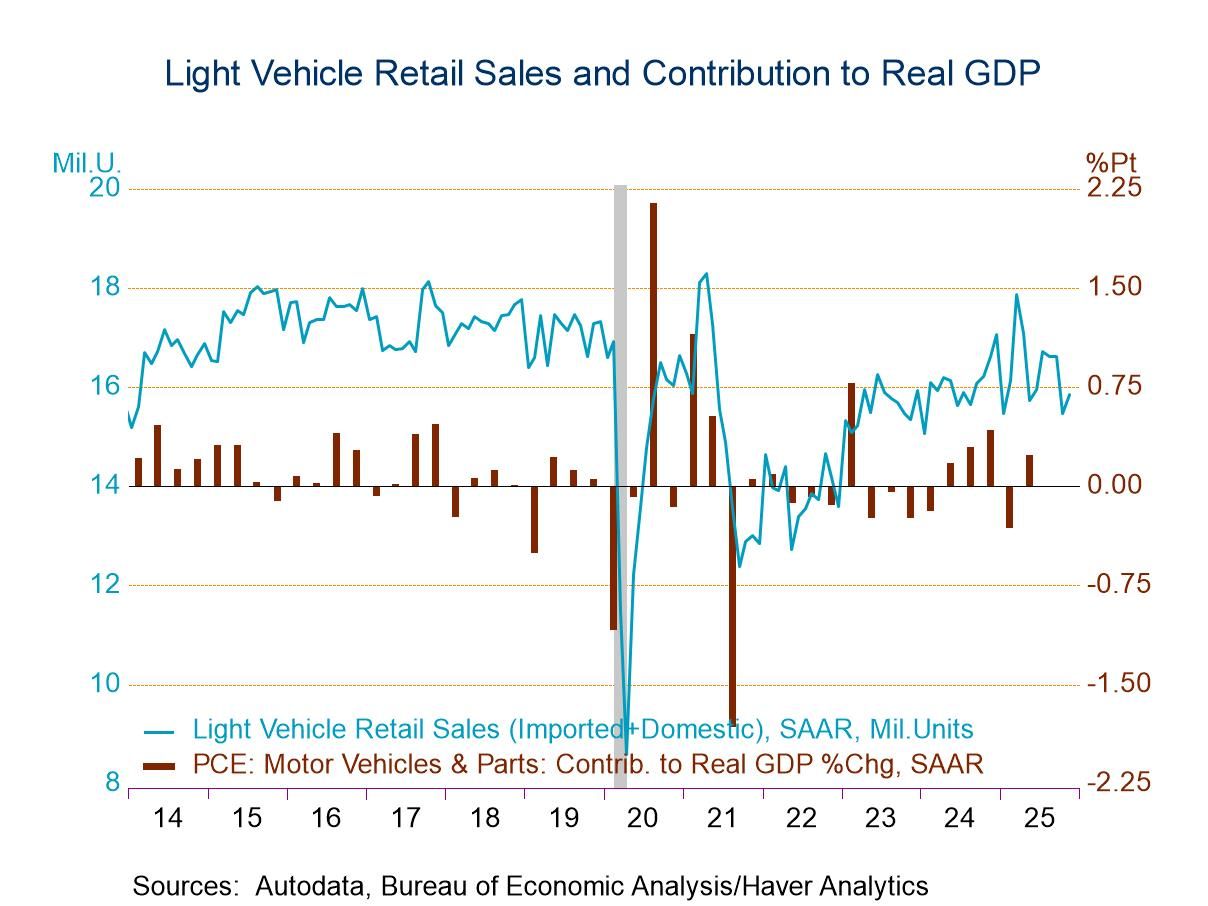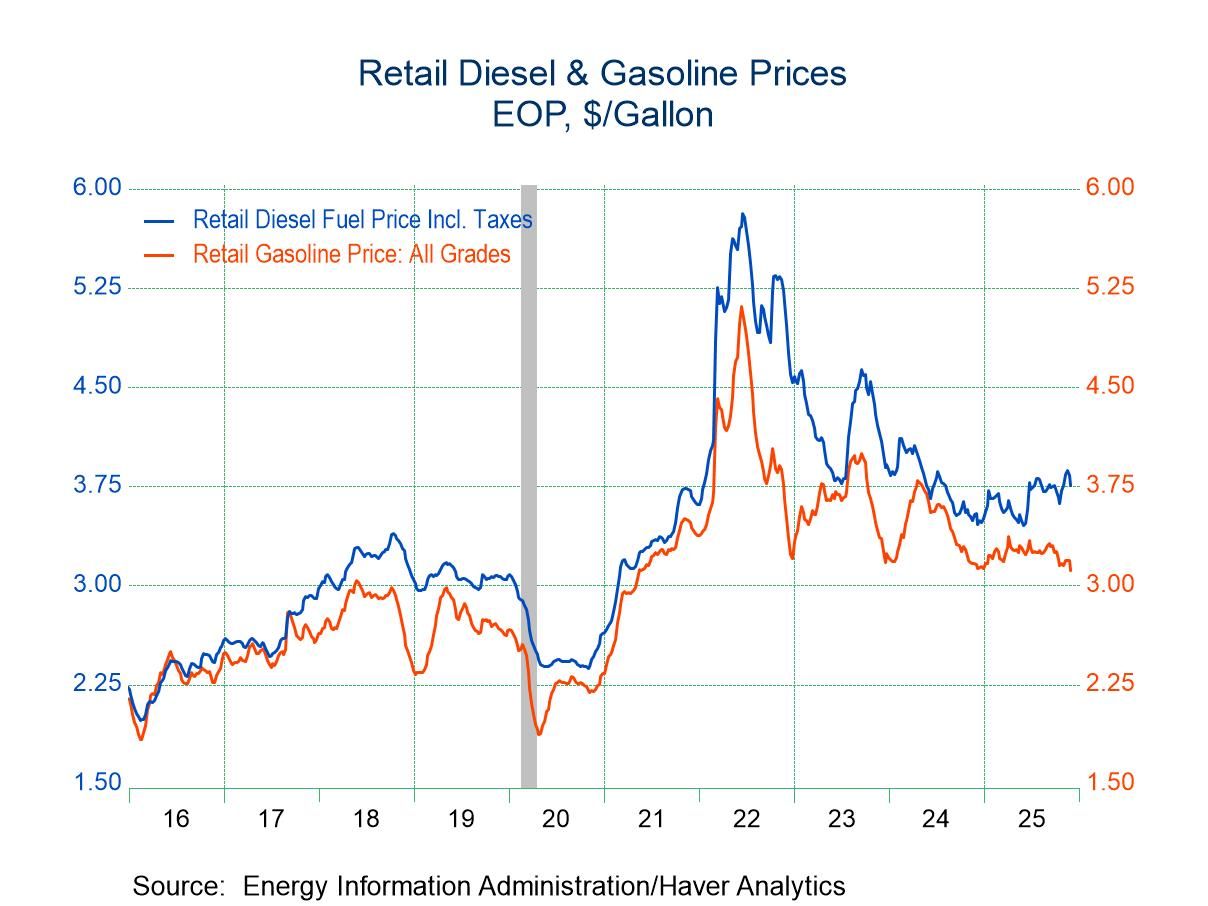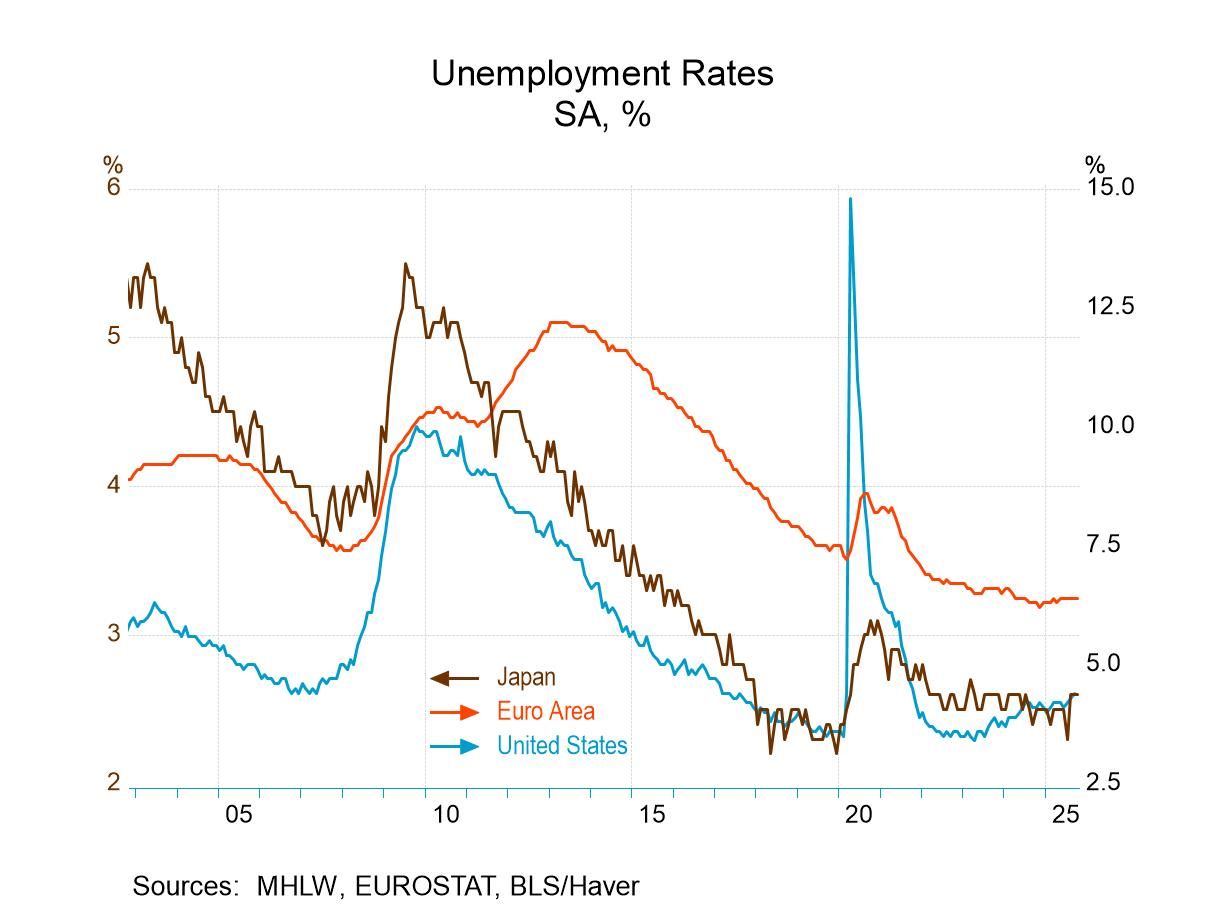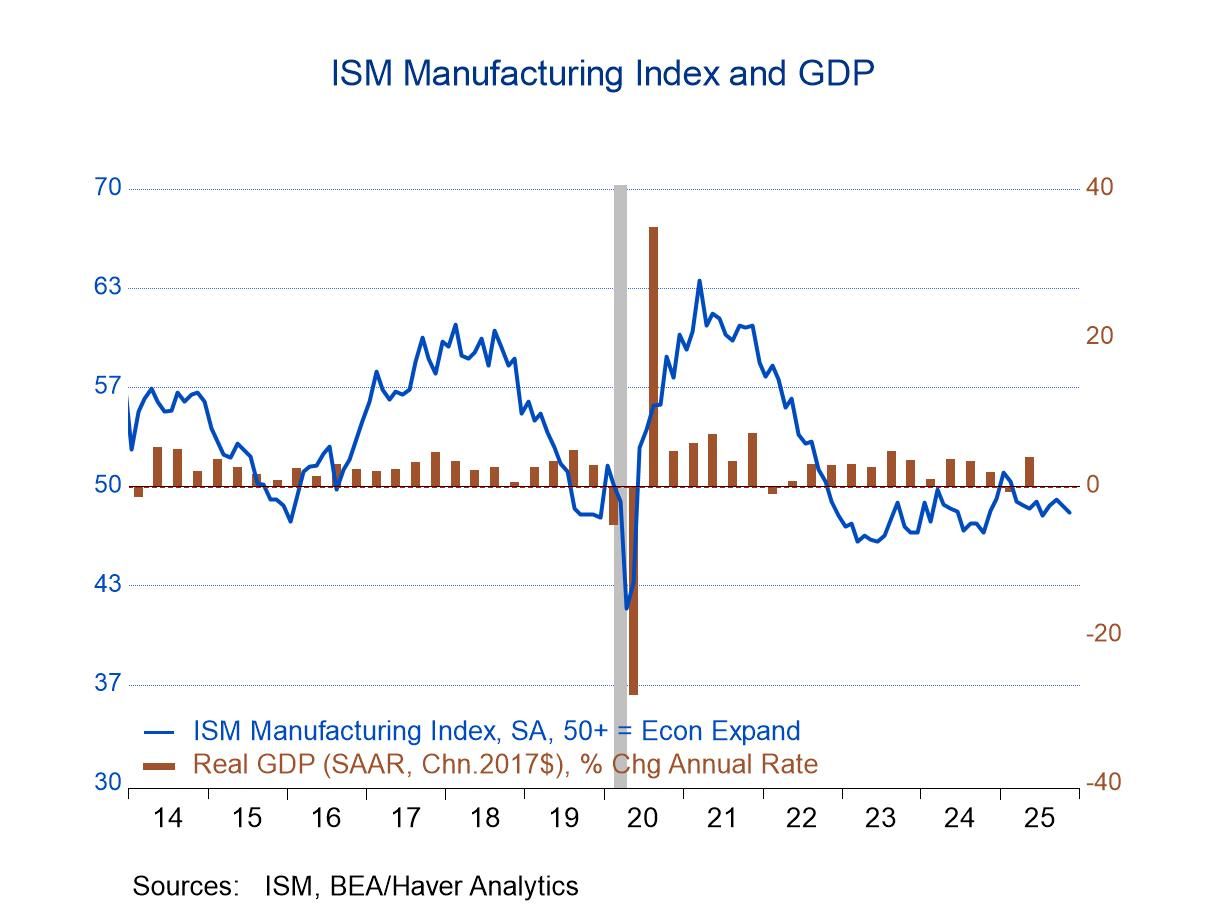 Global| Dec 27 2016
Global| Dec 27 2016Japan, the U.S. and EMU CPI Trends in Profile
Summary
Japan continues to see weak prices in train. Even in a global environment where inflation trends are weak, Japan's trend is still weaker than trends for other major competitors. As much as the bank of Japan has tried to pump up [...]
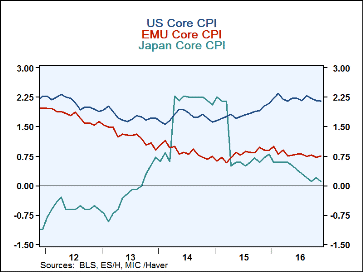 Japan continues to see weak prices in train. Even in a global environment where inflation trends are weak, Japan's trend is still weaker than trends for other major competitors. As much as the bank of Japan has tried to pump up liquidity, it has not had much impact on the inflation rate.
Japan continues to see weak prices in train. Even in a global environment where inflation trends are weak, Japan's trend is still weaker than trends for other major competitors. As much as the bank of Japan has tried to pump up liquidity, it has not had much impact on the inflation rate.
Of course, there is always the 'counterfactual.' What would Japan's inflation rate be like if the Bank of Japan had not undertaken this action? How much lower would inflation be in that event? That is always a difficult and speculative assessment to make. A simpler one is to compare Japan's inflation with similar inflation performance in the United States and EMU.
On that simple comparison, Japan's inflation rate is the lowest of the three areas and it is still falling on a year-over-year basis. Here we are comparing the relevant 'core' (excluding food and energy) for each country/area. On our usual profile (12-month to six-month to three-month), Japan's headline and core inflation rates do show some upward pressure. And in the quarter-to-date, headline inflation is up at a striking 4% pace. But the core measure is still only up at a 0.5% pace in the quarter, the same pace as for the headline over 12 months. In the chart, you can see the 'hump' in Japan's inflation profile from the implementation of the last VAT tax in 2014.
OPEC and friends have their date with destiny on January 1 when all members and cartel satellite cooperators are supposed to be producing on their specified quotas. As of today, crude oil is hovering above $55/barrel and it is the source of some short-term headline inflation pressures globally. But we know oil is not really an inflation stimulant. Under some circumstances, oil prices act perversely, such as when oil prices plunged over the past year and decimated the oil industry in the U.S. causing a sharp pull back in investment and growth instead of stimulating consumer spending with lower prices and reduced energy bills. In this episode as oil price rise, the U.S. energy industry is expected to come back to life and reinvigorate growth compensating for some the weakness higher oil prices should transmit to consumer spending. For nonoil producers like Japan, higher energy prices will simply be a drag on growth that will combat the upward pressure oil prices will impart to headline inflation.
The Bank of Japan continues to roll its monetary policy forward keeping its negative rate in place. There is precious little evidence globally and that negative rates have been the stimulant than central banks had hoped. In fact, there seems to be a move by most negative rate users to freeze things where they are. I take that as implying underlying skepticism.
Even in the U.S. where growth has been best, there is little inflation. But the U.S. is a special case as the dollar has been ruining up to near 16-year highs sending impulses of disinflation back through the economy. In anticipation of more growth, the dollar oddly is acting in a way to undermine growth.
Central bank polices everywhere have some sort of paradox to them or so it seems. Negative rates were launched in Japan without any fanfare and the public was shocked by them; it may have set back growth in fact. Neither negative rates nor massive banking system reserve injections have been able to move the needle on inflation or to get growth in gear in Japan. What seems the most clear is that growth can boost inflation but right now not the other way around. We are still bogged down in some sort of liquidity trap. I suspect it has more to do with excessive global capacity than some sort of pure liquidity premium shift. Neither prices nor wages seem to be able to advance is this surplus state and that keeps inflation expectations as well as inflation in check.
In the EMU, inflation trends are starting to turn slowly, and are high enough that the Bundesbank's Jens Weidmann has been giving speeches about how monetary policy must be made exclusively by looking at inflation. In the U.S., the Fed has raised rates for the second time in a year and the FOMC members have a rough outlook that is consistent with about three hikes in 2017. Yet, inflation expectations in the U.S. are still tempered and actually falling. Despite oil prices being in gear most are not expecting a longer term (five year horizon) pick-up in U.S. inflation based on surveys, though the near-term (one year) outlook is showing some impact because of rising oil prices. In Japan, inflation simply remains dead and lifeless. One exception to the listless or absent inflation trend is the U.K. where growth is still reasonably solid and inflation is rising under the pressure of oil and a sharply weaker pound sterling.
Oil clearly can complicate the picture of what is going on with inflation. It can create headline inflation for a while even if there is no lasting inflation effect. Central banks are going to have to be careful about overreacting to oil-induced headline price pressures in the U.S. and EMU while in Japan the risk is that the central bank could declare inflation-priming success too soon. The situation with global growth and inflation remains touch and go. Central banks continue to go through the motions of excessive pump pricing even where there are fears that priming may have gone too far. There is an exceptionally thin line between too much and not enough these days with fears of backsliding and overshooting as the strangest of bedfellows. There is a clear case of dissonance in monetary policy. As much as some want a bit more inflation, others fear that bad inflation might be taking root. Watching central banks and monetary policy has never been more confusing or frustrating. The only overarching view is that there is no overarching view.

Robert Brusca
AuthorMore in Author Profile »Robert A. Brusca is Chief Economist of Fact and Opinion Economics, a consulting firm he founded in Manhattan. He has been an economist on Wall Street for over 25 years. He has visited central banking and large institutional clients in over 30 countries in his career as an economist. Mr. Brusca was a Divisional Research Chief at the Federal Reserve Bank of NY (Chief of the International Financial markets Division), a Fed Watcher at Irving Trust and Chief Economist at Nikko Securities International. He is widely quoted and appears in various media. Mr. Brusca holds an MA and Ph.D. in economics from Michigan State University and a BA in Economics from the University of Michigan. His research pursues his strong interests in non aligned policy economics as well as international economics. FAO Economics’ research targets investors to assist them in making better investment decisions in stocks, bonds and in a variety of international assets. The company does not manage money and has no conflicts in giving economic advice.



